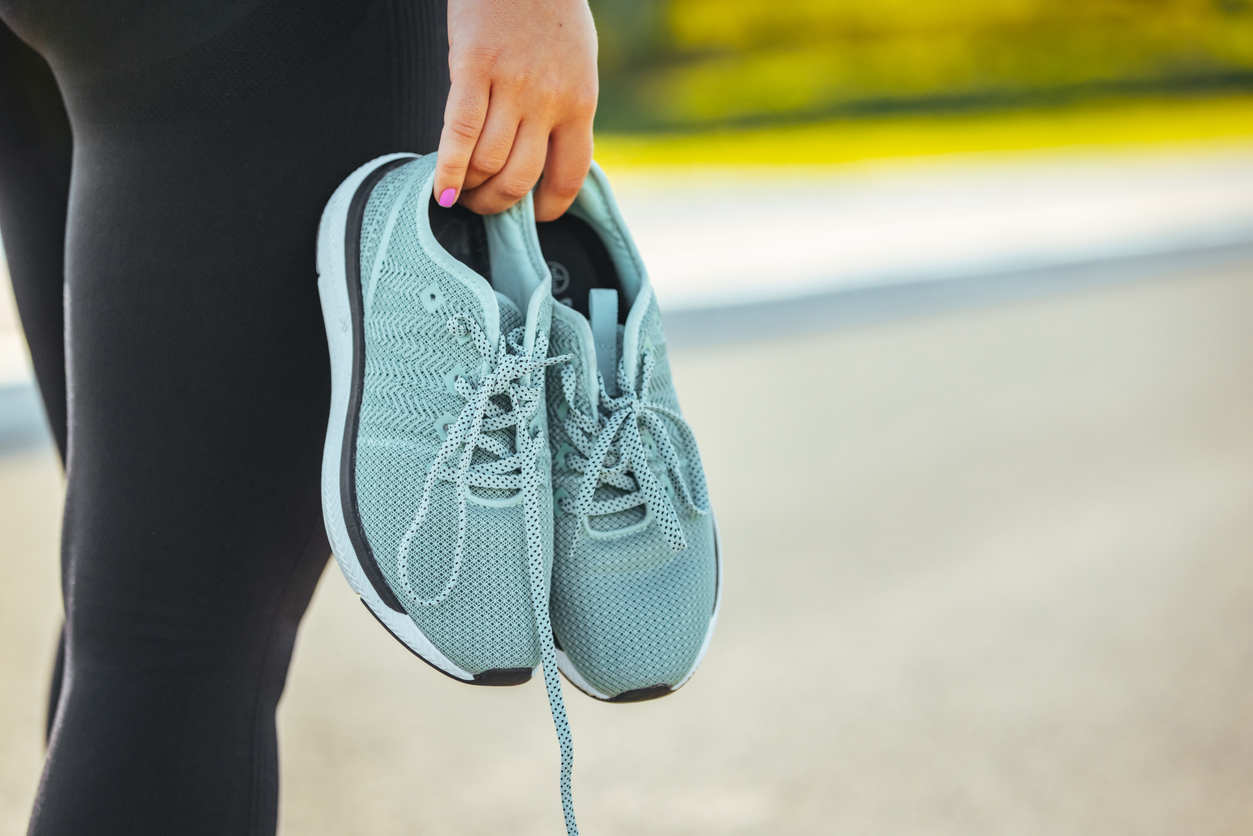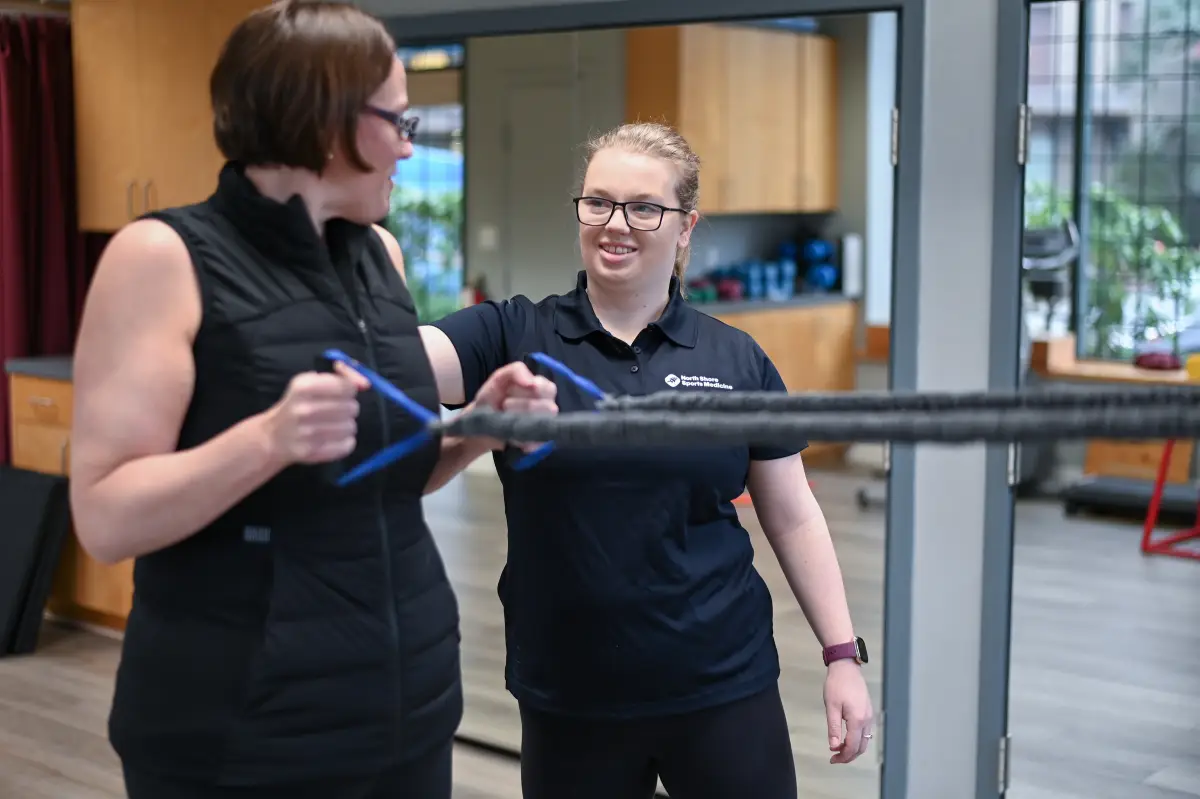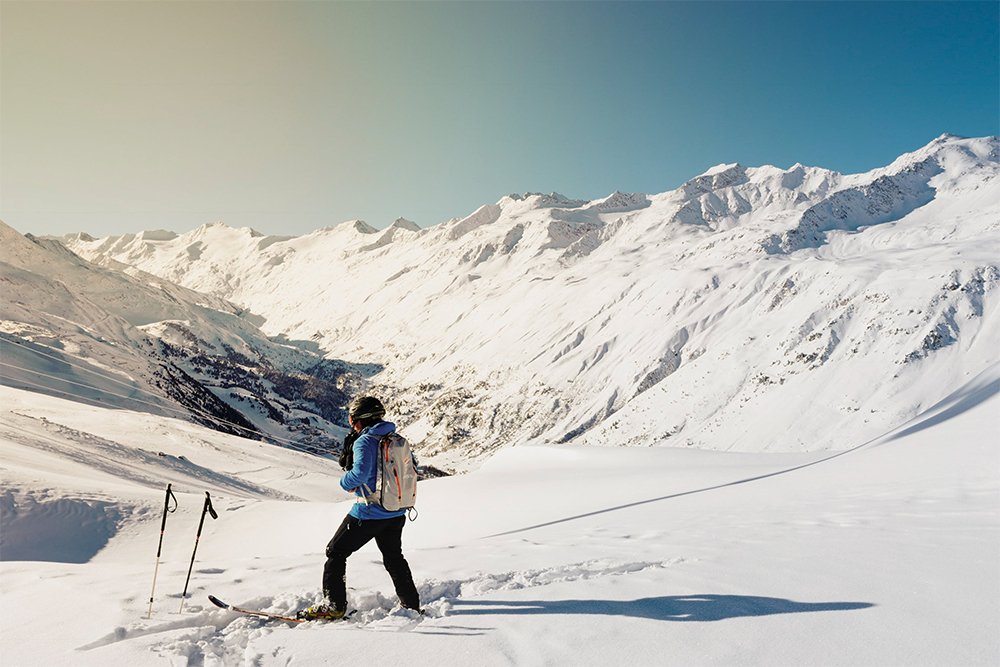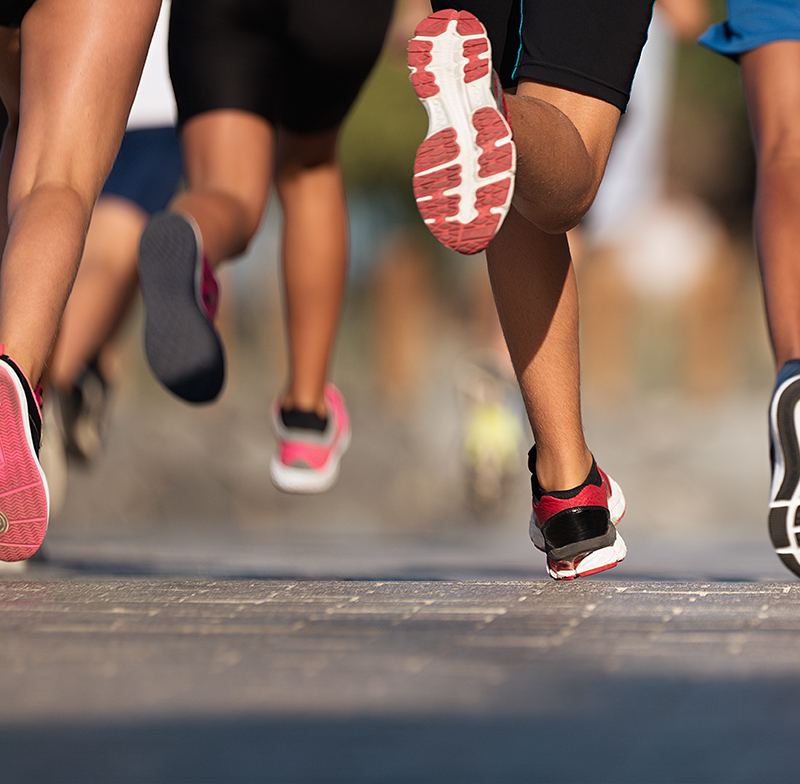Buying running shoes can be a daunting task. Today’s market boasts a plethora of different brands with various models, all claiming to have certain attributes. In this article, we’ll cover four important factors to consider when choosing running shoes, including: training surface, the amount of cushioning, types of support, and your desired fit.
Where You’ll Be Running
Your training surface is the first factor to consider when choosing running shoes. While road and trail running shoes share similarities, there are some stark differences that need to be taken into account. Road running shoes are typically quite light and designed to absorb the repetitive foot strike of running on harder surfaces. Generally, the soles are smoother and flatter, allowing for maximum ground contact. In contrast, trail running shoes tend to be slightly heavier and designed for use in more off-road and rougher environments. The soles are lined with lugs that increase the shoe’s ability to grip soft surfaces.
Determine How Much Support You Need
Next, your gait will determine how much support you need from your running shoe. When your foot strikes the ground, it typically goes through some level of pronation. Pronation refers to how feet roll slightly inward upon interacting with the ground to help propel the runner forward. However, there can be cases when a runner overpronates or supinates (rolls outward slightly) which might necessitate special support in the shoe. The best way to determine your tendency is to have a gait assessment done by a trained professional, like a physiotherapist. Once you have determined how you run, some individuals will benefit from certain shoes that can help them run in a more neutral fashion.
An easy way to help determine your tendency is to look at the wear pattern of old running shoes. Patterns can look as follows:
- Overpronation: Inside edge of the shoe
- Normal Pronation: Outside heel edge and ball of foot
- Supination: Outside edge of the shoe
The Amount of Cushioning You Prefer
Then, think about how much cushioning you prefer in a shoe. Running shoe cushioning varies from “maximal cushioning” to “barefoot.” The stack height is a measure of the amount of material between the ground and the foot, generally given in millimeters. Maximal cushioned shoes will provide a very plush feeling and are great for longer runs. However, due to the amount of material, runners will not be able to feel the ground as readily. Minimal cushioning will provide some protection between your feet and the ground and will improve your ability to feel the ground. However, you will have less protection from the force of running. Barefoot shoes are the opposite of maximal cushioned cushions and can have as little as half a centimeter of material between the ground and the runner. These typically offer no arch support but will give the runner the best ability to feel the ground.
What’s more, cushioning in shoes will create a “heel drop.” Heel drop refers to the difference in height between the heel and toe of the shoe. Higher drop shoes (generally 10mm and up) have more cushioning and will distribute forces higher up on the leg. Low drop shoes (generally 0-8 mm) will have less cushioning and distribute forces on the structures below the knee. It is important to note your current amount of heel drop before buying a new pair of shoes. If you want to run in lower drop shoes, make sure to include an adjustment period to reduce the risk of injury.
Ensuring a Good Fit
Finally, the fit of the shoe itself can make a huge difference. Running shoe sizes can vary slightly from brand to brand, so try to avoid buying new brands solely based on size. The best way to ensure a good fit is to:
- Get your feet measured at a running shoe store.
- Try both shoes on and lace them up correctly.
- Move around! Jog around the store, jump up and down, or try a few lunges.
Choosing Running Shoes Made Easy
Buying running shoes can be daunting, but with the help of professionals, you can remove a lot of the guesswork. Physiotherapists can recommend certain characteristics to look for in shoes that will best suit your needs and goals.
Book an appointment with one of our physiotherapists today to make sure you’re running with your best foot forward.







